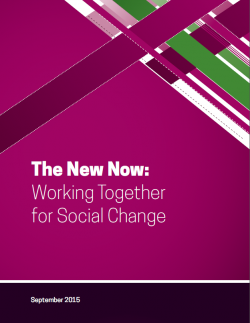The New Now: Working Together for Social Change
The astounding success of the marriage equality campaign has left LGBT groups reeling—both from giddiness and trepidation. The Supreme Court of the United States has movingly affirmed the right of same sex couples to marry. But LGBT movement leaders know that the discrimination LGBT people face—embedded in cultural norms, policies, and laws—is still a part of the fabric of our everyday lives.
Furthermore, grassroots activists around the country are moving from a discussion of marriage equality to talk about broader issues of equity and justice. They see LGBT rights as part of other fights, such as fair immigration policies, police reform, reproductive justice, and addressing climate change.
This report highlights the intersectional approach through case examples in two states where LGBT activists have been using a multi-issue lens in their work to build a strong web of organizations and activists working together. This type of activism is important for several reasons:
1) An intersectional approach reflects the lives of people who are often made invisible in single-issue campaigns and stresses the importance of listening to their experiences in order to inform the strategies and tactics of the broader movement.
2) Centering an analysis in the lived experience of people who are the target of multiple systems of marginalization helps to avoid the “unintended consequences” of pitting those with the least power against one another.
3) By broadening the base and leadership of the movement to bring in communities of color and addressing a more diverse set of issues, the intersectional approach is forward thinking and anticipates where the country is heading demographically.
The report concludes with recommendations for funders and thoughts about investing to encourage and implement an intersectional approach in social activism. For a brief overview of the report, download the New Now executive summary.

